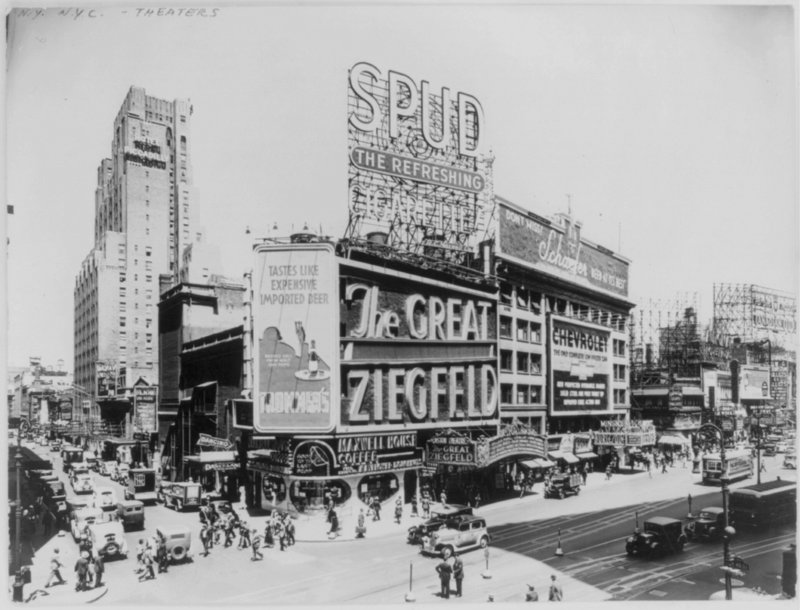Critics will tell you that almost all modern Broadway shows have a bit of the Ziegfeld Follies in them. As New York’s history of theater has progressed, this has proven unmistakably true. The exuberant, big band extravagance of the original Follies, who premiered in New York City exactly 108 years ago today in 1907, is a time-tested performance quality that has withstood the decades. Back then, the Follies and their mastermind, Florenz Ziegfeld Jr., were the pinnacle of showbiz, a new, high-class vaudeville that delighted viewers and practically defined the luxury and the panache of the atmosphere surrounding the Roaring 20s.
Florenz Ziegfeld, called the “glorifier of the American girl,” was a Broadway impressario who sought to recreate the feel of the the Folies Bergère in Paris. “The Follies of 1907,” as his show was first called, premiered on the roof of the city’s famed Jardin de Paris Theater. It was one of the first stage ‘extravaganzas’ of its time. Singers, actors, and dancers handpicked by Ziegfeld wore elaborate costumes and performed on intricately designed sets to classic musical scores, often by notables like Irving Berlin and George Gershwin. The show garnered so much success that after a few runs at the Jardin, Ziegfeld added his name to the revue, and history was made.
The show was the perfect summertime entertainment, a mix of dance, vaudeville, musical numbers, and comedy sketches. It was not the first revue on Broadway, but it is certainly the most famous. Sample scenes of the original 1907 show included whimsical interpretations of the romance of John Smith and Pocahontas and the rivalry between John D. Rockefeller and Andrew Carnegie. The revue’s performers often launched their own successful careers starring in the show, and included the likes of W.C. Fields, Eddie Cantor, Josephine Baker, and Fanny Brice, who began performing the song “My Man” in the 1921 incarnation of the Follies. It was the song that would make Brice’s career, as well as that of the up and coming Barbra Streisand, who portrayed Brice in the musical “Funny Girl” in 1964, thirteen years after her death.
Over the next few decades, Florenz Ziegfeld garnered immense success with his Follies, spawning a number of films, a radio show, boasting a long list of successful alumni performers, and opening his own Ziegfeld Theatre in 1927. Upon his death in 1932, his widow Billie Burke (otherwise known as Glinda the Good Witch in the 1939 film “The Wizard of Oz“) authorized the use of his name in subsequent productions. Unfortunately, no incarnation of “Follies” ever reached the success of Ziegfeld’s original after his death. However, the name lives on, synonymous now with the world of 1920s New York City theater, and a lasting relic of a grander time when for a good show, the world looked to the Follies.
Next, read about the museum running in the second Ziegfeld Theatre, opened in 1969. Get in touch with the author @jinwoochong.






